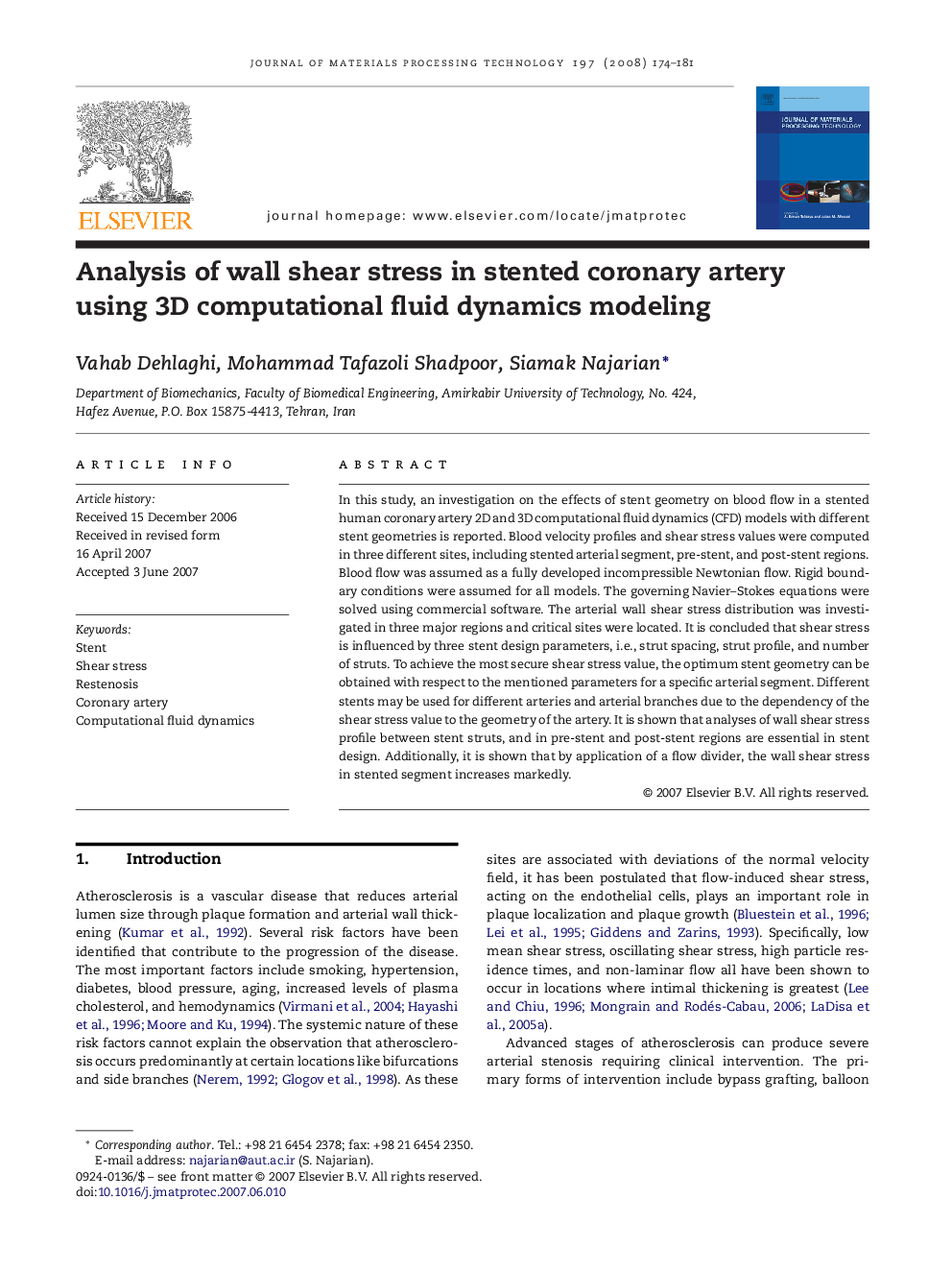| Article ID | Journal | Published Year | Pages | File Type |
|---|---|---|---|---|
| 793774 | Journal of Materials Processing Technology | 2008 | 8 Pages |
In this study, an investigation on the effects of stent geometry on blood flow in a stented human coronary artery 2D and 3D computational fluid dynamics (CFD) models with different stent geometries is reported. Blood velocity profiles and shear stress values were computed in three different sites, including stented arterial segment, pre-stent, and post-stent regions. Blood flow was assumed as a fully developed incompressible Newtonian flow. Rigid boundary conditions were assumed for all models. The governing Navier–Stokes equations were solved using commercial software. The arterial wall shear stress distribution was investigated in three major regions and critical sites were located. It is concluded that shear stress is influenced by three stent design parameters, i.e., strut spacing, strut profile, and number of struts. To achieve the most secure shear stress value, the optimum stent geometry can be obtained with respect to the mentioned parameters for a specific arterial segment. Different stents may be used for different arteries and arterial branches due to the dependency of the shear stress value to the geometry of the artery. It is shown that analyses of wall shear stress profile between stent struts, and in pre-stent and post-stent regions are essential in stent design. Additionally, it is shown that by application of a flow divider, the wall shear stress in stented segment increases markedly.
